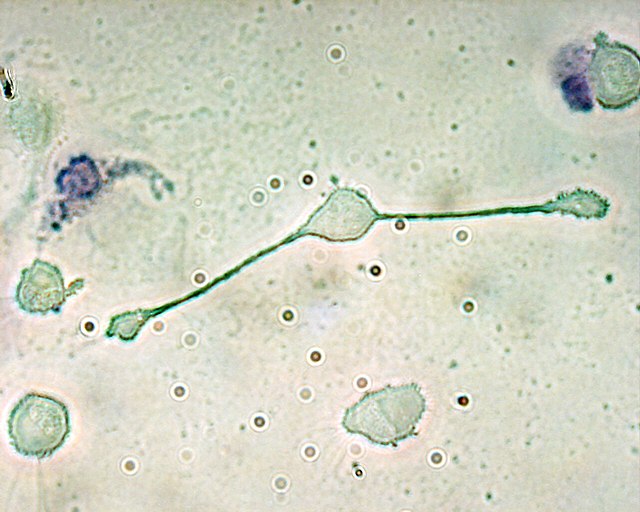Antioxidant effect of polyphenols and natural phenols
A polyphenol antioxidant is a hypothetized type of antioxidant, in which each instance would contain a polyphenolic substructure; such instances which have been studied in vitro. Numbering over 4,000 distinct chemical structures, such polyphenols
may
have antioxidant activity {{{1}}} in vitro
(although they are unlikely to be antioxidants in vivo).
Hypothetically, they may affect cell-to-cell signaling, receptor sensitivity, inflammatory enzyme activity or gene regulation, although high-quality clinical research has not confirmed any of these possible effects in humans as of 2020.
Blackberries are a source of polyphenols.
A macrophage stretching its arms to engulf two particles. Reactive oxygen species promote oxidized LDL.
Grapes contain certain polyphenol compounds, although none has been shown to be an antioxidant in vivo.
Cocoa is the prime ingredient of chocolate, a source of polyphenols.
In chemistry, a radical, also known as a free radical, is an atom, molecule, or ion that has at least one unpaired valence electron.
With some exceptions, these unpaired electrons make radicals highly chemically reactive. Many radicals spontaneously dimerize. Most organic radicals have short lifetimes.
The deep colour of lithium naphthalene results from the lithium naphthanide radical.
Moses Gomberg (1866–1947), the founder of radical chemistry






